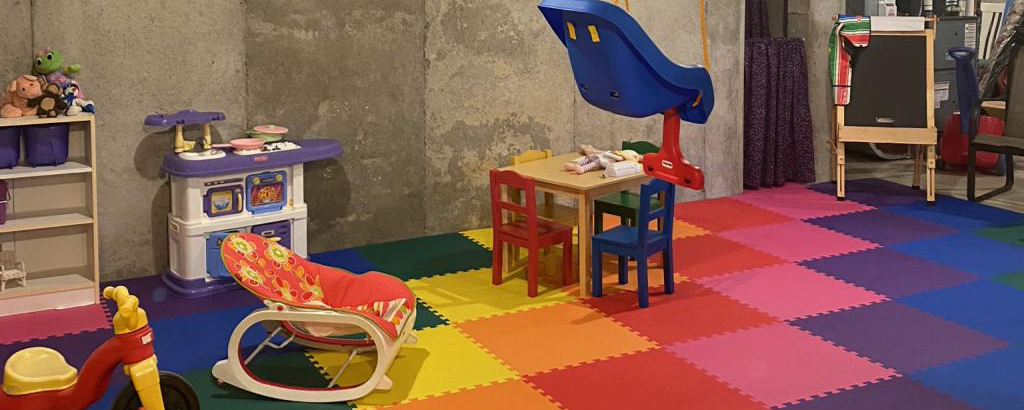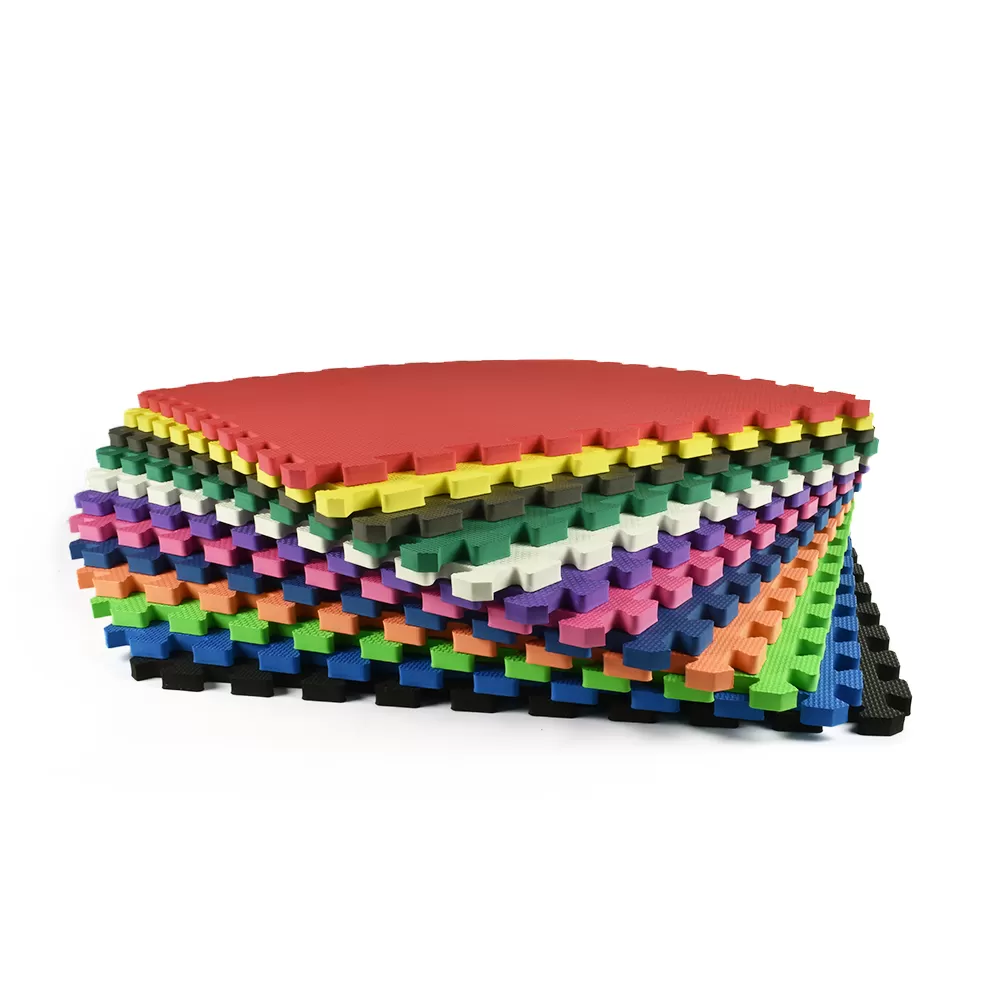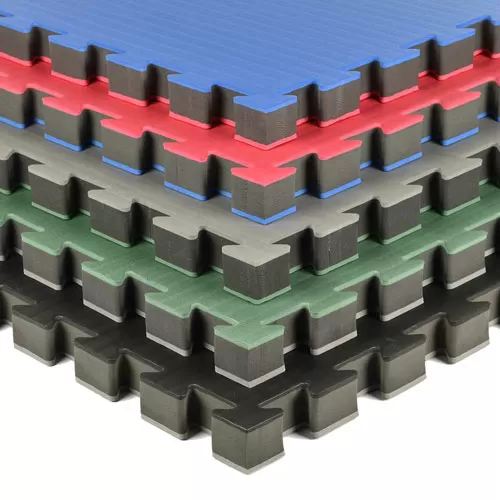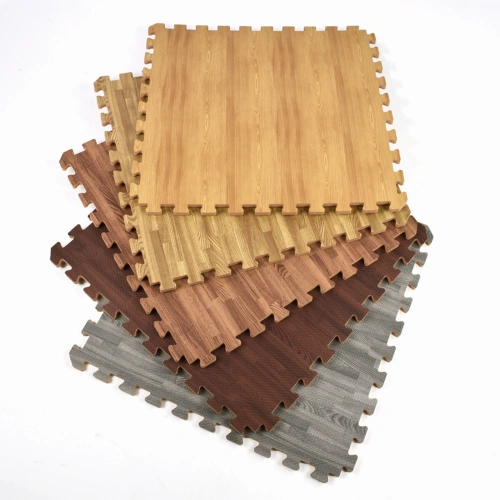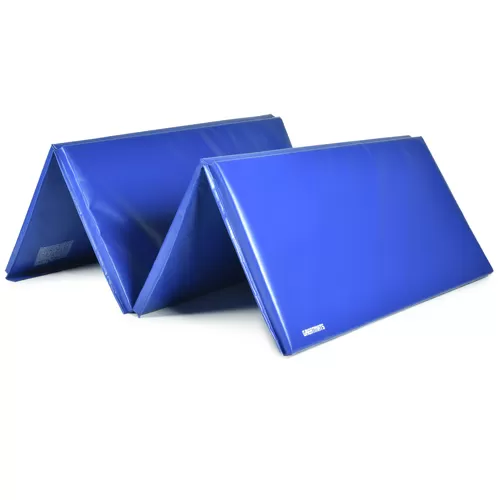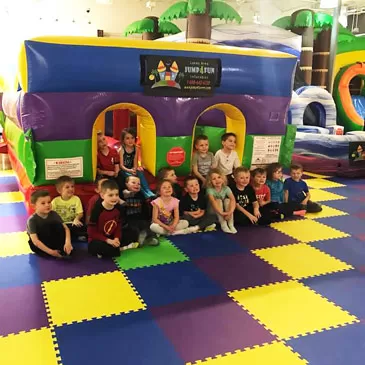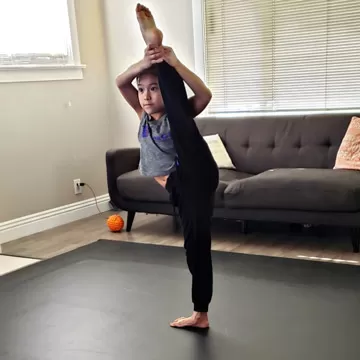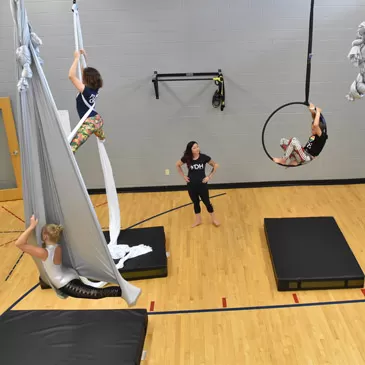Kids floor mats help you create a safe environment for children to play or to practice sports indoors or outdoors. You can install kids floor mats in a playroom, bedroom, basement, workout space, or other areas where kids like to play. At Greatmats, we offer these floor tiles in a variety of materials – including foam, rubber, PVC plastic, and carpet.
Article Library



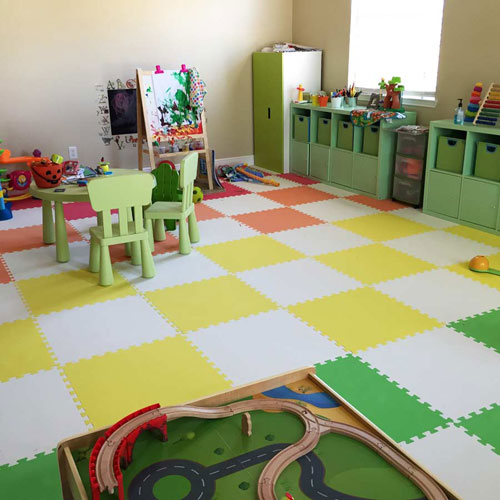
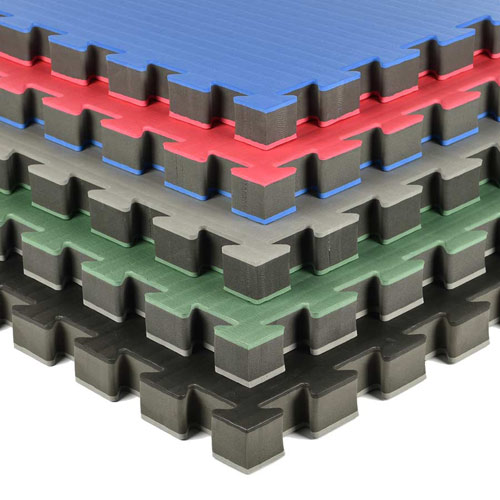
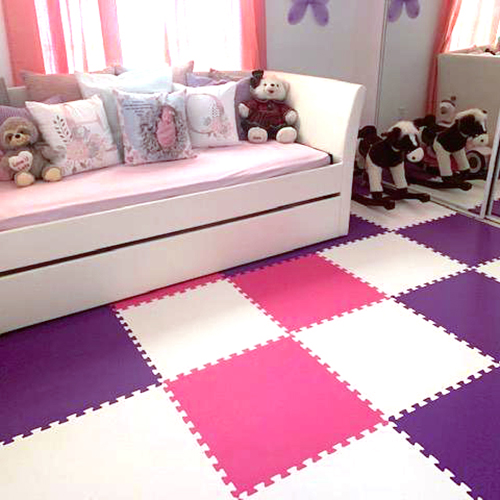
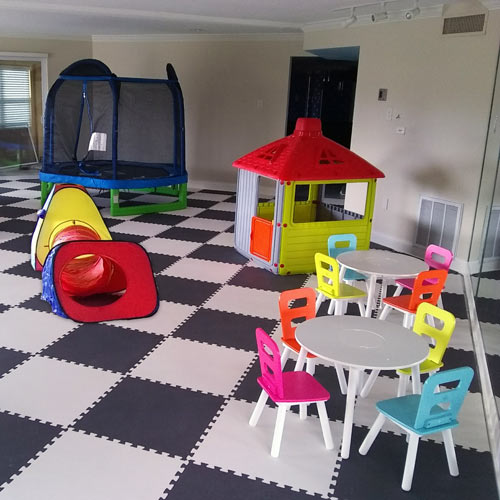

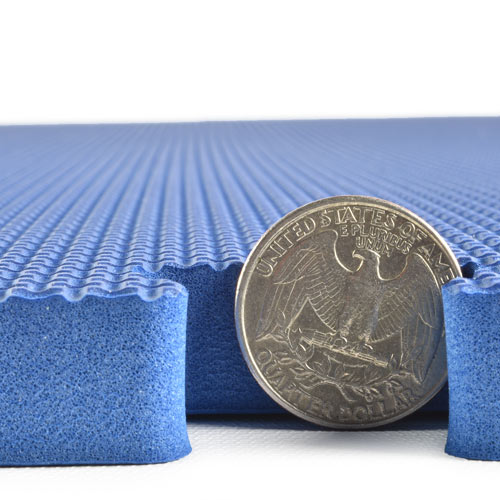
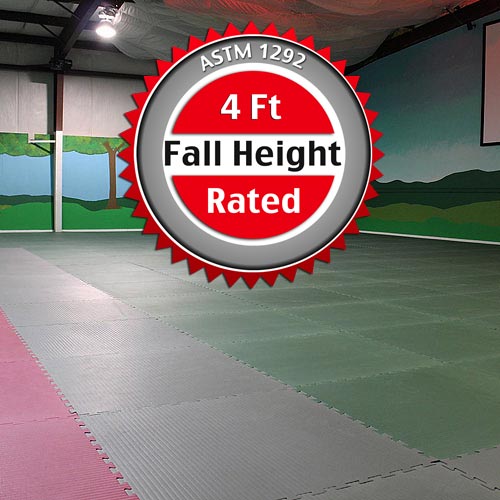
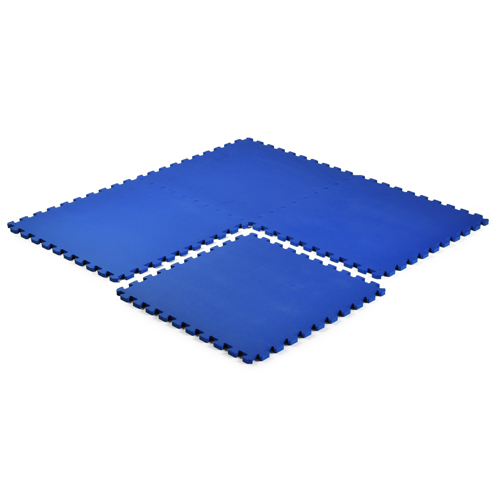

Video Library












Ideas Before You Buy Kids Floor Mats
Tips & considerations for purchasing Kids Floor Mats:
The following blogs offer tips on what aspects to look for in kids floor matting before making a purchase. Wherever you plan to use this flooring, these are all important things to learn before making your final decision.- Learn about the safe material for kids that provides a rubbery flooring feel that offers excellent buoyancy and shock absorption capability. Learn More: What Type of Foam Are Children's Mats?
- Discover the best sensory room floor mats and why we recommend them. Learn More: What Are The Best Sensory Room Floor Mats?
- Learn about what material options are best for flooring in a preschool environment. Learn More: What Material Options Are Best For Preschool Flooring?
Top 10 Questions About Kids Floor Mats
Below are the most popular questions we've received about floor mats for kids. Click the question to get a detailed answer and explanation on these topics.- How Do You Clean EVA Foam Mats for Kids? Use a broom or vacuum cleaner to remove dust and dry debris from the surface of the foam floor layout. You then can use a mop to apply a floor cleaning solution to clean and sanitize the floor before allowing it to dry in the air over a few hours.
- What Are the Top Temporary Basement Flooring Options for Kids? When installing a temporary floor in a basement to create a kids’ play area, you may want to stick with puzzle-style tiles that pop together without needing to use glue. After playtime is over, you can disassemble the tiles and return them to storage when using these interlocking tiles.
- How Do You Soundproof a Kids’ Room? To reduce stray noise from the playroom penetrating the entire house, consider installing kids floor mats that have some sound reduction capabilities. Foam typically works best as noise reduction flooring for kids, and it also provides cushioning to protect against falls.
- What Are the Best Basement Playroom Flooring Features? When installing kids floor mats over a concrete basement subfloor, it’s important to look for mats that can provide some cushioning in case of falls. Thermal protection against the cold concrete subfloor is also helpful when kids will be sitting on the floor to play.
- What Are the Top Kids Floor Mats on a Budget? When trying to create a safe type of flooring for a kids’ playroom at a low price, you may want to consider EVA foam tiles. Inexpensive foam flooring is comfortable for kids to play on, providing cushioning, and it is available in many different colors that are fun for kids.
- What Are The Best Floor Ideas for Daycares and Preschools? Installing a safe type of floor at a daycare or preschool is easier than you may think. Consider foam tiles that provide cushioning against potential falls, while being easy to install and clean. PVC plastic and rubber can also work well as kids floor mats at a preschool.
- How Thick Should Interlocking Foam Mats Be for Kids? Thicker kids floor mats can provide an extra bit of cushioning for children, while thinner mats cost less and can be easier to install. Mats around 1/2 inches in thickness are inexpensive, while mats around 1-1/2 inches thick provide maximum protection against falls while playing.
- What Is the Best Soft Outdoor Patio Flooring for Kids? In a patio area that often consists of unforgiving concrete, finding kids floor mats that provide a safer space for children to play is a must. PVC plastic is a popular selection, as it stands up well to all kinds of weather, while providing more cushioning than some other options.
- What Are the Best Cheap Playground Tiles? When seeking a safer type of flooring to install at a playground to reduce injury possibilities when kids fall, consider rubber, foam, or PVC plastic tiles. These kids floor mats typically have a relatively low price, making them easier to install when you have a strict budget.
- What Are the Best DIY Kids Floor Mats for a Bedroom? Children often will be sitting and laying on the floor of a bedroom to play, meaning having a soft type of flooring will provide a high level of comfort for the kids. Interlocking foam tiles and interlocking padded carpet tiles are the most popular selections for installing in a child’s bedroom.
Best Kids Floor Mat Products
Premium Foam Kids and Gym Mats
Our Premium Foam Kids and Gym Mats are an extremely popular selection for multiple use cases as kids floor mats. They are easy to install, carry a low price, and are available in more than a dozen different color choices.
Indoor Foam Playground Flooring Tiles
Create a 4-foot fall height rating when you install our Indoor Foam Playground Flooring Tiles. These tiles use a puzzle-style edge, which greatly simplifies installation, and they cover almost 11 square feet per tile, which makes the install process go fast over a large space.
Reversible Wood Grain Foam Tiles
In a bedroom for an older child, you may want kids floor mats that look nicer than brightly colored floor tiles. For this use case, our Reversible Wood Grain Foam Tiles are a popular selection, as they have a design that resembles a hardwood floor, including a faux wood grain pattern that looks realistic.
Home Sport and Play Foam Mats
For kids floor mats that can stand up to kids roughhousing or even practicing martial arts, our Home Sport and Play Foam Mats deliver excellent performance at a low price. These mats have a reversible design, so you can flip them over and use the other side in case of damage, further lengthening the lifespan of the tiles.
Discount Foldout Gym Mats
For working on cheer moves, dance moves, martial arts techniques, or other types of athletics at home, our Discount Foldout Gym Mats maximize the level of cushioning for the kids. These kids floor mats fold up for storage and unfold for usage, measuring 1-3/8 inches in thickness with a maximum 4x8-foot coverage area when fully unfolded.
Kids Foam Mats Customer Installations
Lakes Area Jump4Fun Indoor Amusement Center
When the owners of the Lakes Area Jump4Fun Indoor Amusement Center needed to cover about 6,000 square feet of space between bounce houses and attractions in their facility, they wanted a cushioned space to protect children who may fall while running. With our puzzle-style kids floor mats, they could create a fun, colorful space that was very easy to install.
Playroom Floors: Premium Foam Kids and Gym Mats
Anderson Invasion Cheer
Anderson Invasion Cheer was looking to expand the space available for its cheerleading teams to practice, helping them simulate a competition floor. When the facility purchased our 6x42-foot cushioned cheer mat, it was able to use it to add another section to its practice mat, increasing the size available for workouts.
Cheer Floors: Flexible Rolled Cheerleading Mats
Leona and Gen Sangalang
To create a high-quality dance floor at home for multiple practice sessions during the week, Greatmats’ customers Leona and Gen Sangalang chose our roll of Rosco flooring. By placing foam tiles over the laminate living room floor in the home and then laying the Rosco roll over the foam, the family created a dance floor with cushioning underneath that’s safer for regular practice sessions.
Dance Floors: Custom Reversible Rosco Dance Floor
Discover Happy Aerial Arts and Pilates
After adding an aerial arts program to an existing pilates studio, Discover Happy Aerial Arts and Pilates owner Amanda Rhine knew she needed more than cushioned kids floor mats to provide protection against potential falls from height. She chose our crash mats that offer a thickness of up to 8 inches in a 4x6-foot coverage space, resulting in a safer place to practice various skills related to aerial arts.
Aerial Arts Floors: Non-Fold Safety Crash Mats
Infinity Martial Arts
Infinity Martial Arts decided to begin hosting the Infinity National Championships tournament, drawing about 300 competitors. The facility needed excellent flooring to give the competitors the experience they deserved, and our martial arts mats delivered exactly the desired level of cushioning, quality, and durability.
Martial Arts Floors: Premium Martial Arts Karate Mats
Patio Tile Installation & Maintenance Videos
How to Install 2x2 ft Interlocking Foam Mat and Tile Floors
How To Clean EVA Foam Mats
How to Cut Foam Mats in 4 Easy Steps
